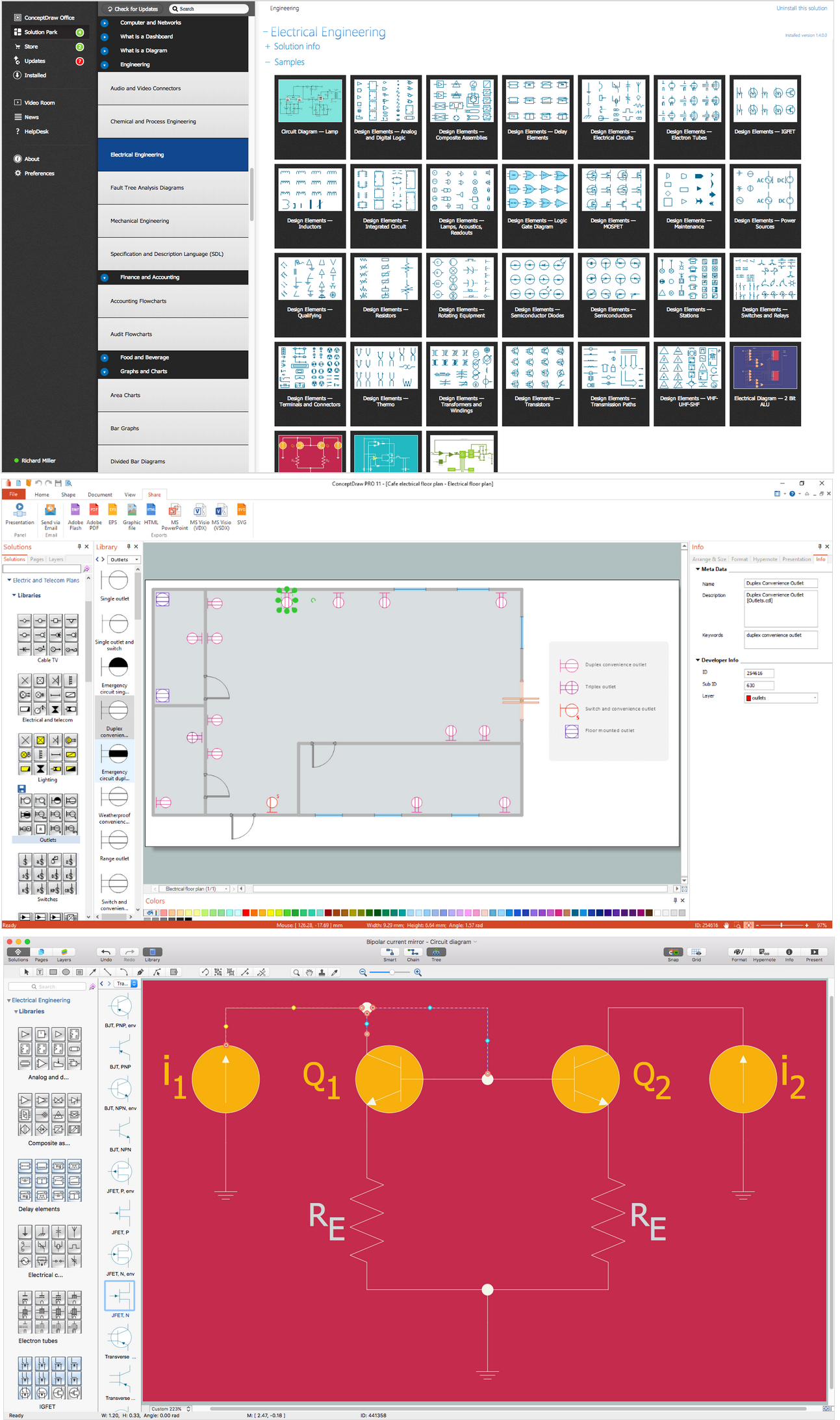Wiring Diagrams with ConceptDraw DIAGRAM
A Wiring Diagram is a comprehensive schematic that depicts the electrical circuit system, shows all the connectors, wiring, signal connections (buses), terminal boards between electrical or electronic components and devices of the circuit. Wiring Diagram illustrates how the components are connected electrically and identifies the wires by colour coding or wire numbers. These diagrams are necessary and obligatory for identifying and fixing faults of electrical or electronic circuits, and their elimination. For designing Wiring Diagrams are used the standardized symbols representing electrical components and devices. ConceptDraw Solution Park offers the Electrical Engineering solution from the Engineering area with 26 libraries of graphics design elements and electrical schematic symbols for easy drawing various Wiring Diagrams, Electrical Circuit and Wiring Blueprints, Electrical and Telecom schematics of any complexity, Electrical Engineering Diagrams, Power Systems Diagrams, Repair Diagrams, Maintenance Schemes, etc. in ConceptDraw DIAGRAM software.
 Computer Network Diagrams
Computer Network Diagrams
Computer Network Diagrams solution extends ConceptDraw DIAGRAM software with samples, templates and libraries of vector icons and objects of computer network devices and network components to help you create professional-looking Computer Network Diagrams, to plan simple home networks and complex computer network configurations for large buildings, to represent their schemes in a comprehensible graphical view, to document computer networks configurations, to depict the interactions between network's components, the used protocols and topologies, to represent physical and logical network structures, to compare visually different topologies and to depict their combinations, to represent in details the network structure with help of schemes, to study and analyze the network configurations, to communicate effectively to engineers, stakeholders and end-users, to track network working and troubleshoot, if necessary.
- Network Layout Floor Plans | Local area network (LAN). Computer ...
- Network Layout Floor Plans | Design elements - Network layout ...
- Power socket outlet layout | How To use House Electrical Plan ...
- Power socket outlet layout | Create Floor Plans Easily with ...
- Network Layout Floor Plans | Design elements - Network layout ...
- How To use House Electrical Plan Software | Create Floor Plans ...
- Ethernet local area network layout floor plan | Outlets - Vector ...
- How To use House Electrical Plan Software | Electrical and Telecom ...
- How To use House Electrical Plan Software | Design elements ...
- Network Layout Floor Plans | How To Create a MS Visio Floor Plan ...
- How To use House Electrical Plan Software | How To Create ...
- How To use House Electrical Plan Software | Home Electrical Plan ...
- Power socket outlet layout | Electrical Drawing Software and ...
- Lighting and switch layout | How To use House Electrical Plan ...
- House Layout
- Design elements - Walls, shell and structure | How To use House ...
- Ethernet local area network layout floor plan | How to Draw a Floor ...
- How To use House Electrical Plan Software | Design elements ...
- Building Plans Area | Building Blueprint With Network Services ...
- How To use House Electrical Plan Software | Wiring Diagrams with ...
